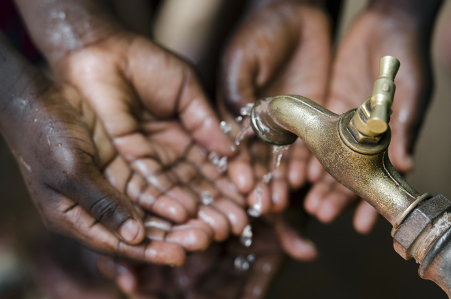Authors: Alessandro Peluso and Simona Sagone.
The protection of human rights has always been inextricably linked to the environment in which the individual develops. Conversely, failure to protect the environment affects the possibility of ensuring adequate respect for the individual. Even though the link between protection of the individual and protection of the environment has always existed and is not simply a legal-social construct, attention to environmental protection has only relatively recently taken its place in the international debate, which is why most international human rights instruments continue to lack a direct and explicit reference to the environment. In fact, it cannot yet be said that there is an autonomously enforceable right to the environment, but several rights linked to it: the right to water is one of these.
The right to water is today a fundamental right, recognized as such by the United Nations Assembly Resolution 64/92 of July 28, 2010, which explicitly states that "the right to safe drinking water and sanitation is a human right essential to the quality of life and to the exercise of all human rights." Its origins can be found in the 1979 Convention on the Elimination of All Forms of Discrimination against Women. Indeed, Article 14(2) states that "States Parties shall take all appropriate measures to eliminate discrimination against women in rural areas in order to ensure their participation in development and its benefits, on a basis of equality between men and women and, in particular, guaranteeing their right [...] to benefit from adequate living conditions, [...] with regard to water supply." Along the same lines is the 1989 Convention on the Rights of the Child, where Art. 24 clearly expresses that "States Parties recognize the right of the child to enjoy the best possible state of health and to benefit from medical and rehabilitation services". Consequently, the State itself must strive to "combat disease and malnutrition, including in primary health care, particularly through the use of readily available techniques and the provision of adequate nutritious food and clean drinking water, taking into account the dangers and risks of pollution of the natural environment."

Nowadays, access to water is made more obstructed, mainly due to two linked phenomena: climate change, whose effects are mainly ascribed to humans’ activities towards their surroundings. In relation to the right to access to potable water and its possible obstruction by the human hand, the case Anderson, et al. v. Pacific Gas and Electric (1993) is crucial. In this case study, the company was pouring pollutant material into unlined wastewater spreading ponds around the city of Hinkley, California. These activities lasted for as long as 30 years, causing the poisoning of almost the entire community. In addition, the groundwater was so deeply polluted and covered such a vast area that the town and surrounding area are now almost desolate. Regardless of the merits of the judgment, this case clearly demonstrates how corporate economic interests have trumped the fundamental right to clean water and, more importantly, have consequently reduced the amount of water available to human beings.
However, man’s harmful behaviors and activities have also caused much wider-ranging and longer-term damage, leading to often irreversible consequences. In such situations, while direct human responsibility cannot be established, it can only be grasped indirectly through the detection of corrosive actions, repeated over time. Prominent and typical examples of climate change are the countless floods that have been ravaging our planet for some time now. One of the most disastrous events in recent times involves the intense floods that have hit Pakistan, and which, in addition to causing inestimable damage to the populations settled there, have also destroyed the water systems of the towns, making access to drinking water impossible.
Back in 2021, Pakistan was the scene of several protests over water shortages due to both the climate crisis and government mismanagement of resources. Here, the port city of Gwadar finds itself damaged during a water shortage, due to a severe drought. This had reduced the flow of water from the three dams that used to supply the country, and the distribution of water through jerry cans has become increasingly less sustainable. Water scarcity, in addition to causing a great deal of discomfort related to dehydration, can cause serious food security problems, particularly due to the loss of crops and the inability to cultivate completely flooded land. Beyond that, human health can be seriously jeopardized by the risk of disease transmission, again linked to the scarcity of such a basic commodity as water.
Having examined the right to water from two different perspectives, we can conclude by pointing out how there is a strong connection between the protection of water as a primary and fundamental human resource, and environmental disasters and climate change. Secondly, it can be noticed how, unfortunately, this correlation is not always perceived by humans, especially at the governmental-institutional level. This counts both for short-term policies (that aim at purely direct protection of water resources) and long-term policies (that more generally concern the protection and preservation of natural resources and the environment). Certainly, in the latter case it is more difficult to identify those directly responsible, and to ensure more direct protection of the primary good. This why we believe it is necessary to put more focus on cross-cutting protection of the fundamental resources of our planet.
No comments.